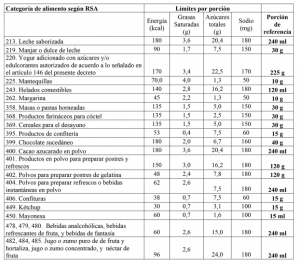My last San Francisco Chronicle column: Looking Back, Looking Forward
Looking back at year of progress for food system
After 5 1/2 years and 70 columns written exclusively for The Chronicle, this is my last. As I move on, I do so with much hope for a healthier and more equitable food system.
My optimism comes from taking the long view of progress in agriculture, food, nutrition and public health. When I look back on what’s happened since, say, 1980, I see enormous improvement in the foods available in supermarkets and in schools, the availability of organic and locally grown food, and public interest in everything about food, from taste to politics.
At this time of year, it’s customary to highlight the 10 most notable achievements of the past 12 months. But let me point out one conspicuous absence from this list – the creation of a stronger and more compassionate safety net for the poor and unemployed. Working toward this goal needs to be high on the food advocacy agenda for 2014.
With that gap in mind, here’s where I’ve seen noteworthy progress:
School nutrition standards: The new rules are the result of the most significant achievement of Michelle Obama‘s Let’s Move! campaign – the Healthy, Hunger-Free Act of 2010. This act required schools to provide not only healthier meals, but also snacks. Early reports find most schools to be doing a good job of putting the new rules into effect. Yes, the rules do not go nearly far enough (they are too generous in sugar, for example), but they are a step in the right direction and lay the groundwork for even better standards.
Food safety rules: The Food and Drug Administration finally started issuing regulations for the Food Safety Modernization Act of 2010. Once final, these rules will go a long way toward requiring food producers to take measures to ensure safety, and giving the FDA the authority to make sure they do. Yes, its details still need tweaking, but FSMA is a milestone on the road to a safer food supply. The next steps will be to bring the U.S. Department of Agriculture’s authority in line with the FDA’s, and to develop a single food safety agency that combines the functions of both.
FDA’s guidance on antibiotic resistance: The FDA has called on drug companies to voluntarily agree to stop using medically important antibiotics to promote growth in farm animals and to require a veterinarian’s prescription when using these drugs to treat, prevent or control animal disease. Yes, this is voluntary and drug companies have three years to comply. But the FDA has taken the first step toward banning antibiotics for anything but therapeutic purposes, an impressive achievement given current political realities.
Let’s Move!’s food marketing initiative: Marketing is the elephant in the room of childhood obesity. It overwhelmingly influences kids to prefer, demand and consume junk foods and sodas. Mrs. Obama’s Let’s Move! campaign has no authority to regulate marketing to kids. By keeping a focus on this issue, she gives advocates plenty of room to hold food companies publicly accountable for their marketing practices.
Soda and junk food taxes in Mexico: Despite intense and well-organized opposition by its soda, sugar and small-business industries, the Mexican government passed a 1-peso-per-liter tax on soft drinks and an 8 percent tax on junk foods.
These measures were meant to counter the country’s 70 percent of overweight people and, no coincidence, record-breaking soda consumption. The initiative succeeded as a result of strong advocacy support and also because the revenues were committed to social purposes, among them providing clean drinking water in schools. Other countries are likely to be inspired to enact similar measures.
GMO labeling initiatives: Connecticut passed a GMO labeling law in 2013, but election initiatives in California and Washington failed. Even though the food and biotechnology industries poured tens of millions of dollars into defeating labeling measures, the margins of defeat were small. My crystal ball says that some such measures will eventually pass. The food biotechnology industry must think so too; some of its groups are calling for voluntary GMO labeling.
Fast-food workers’ wage demands: People who work full time should be able to support their families and not have to be on public assistance. If you work 40 hours at the federal minimum wage of $7.25 per hour, you will earn less than $300, and that’s before taxes.
USDA‘s agricultural coexistence initiatives: By agricultural coexistence, the USDA means peaceful relations between quite different farming systems – industrial and GMO versus organic and sustainable. Peaceful coexistence would be a lot easier if GMO pollen didn’t drift onto organic crops, if Congress supported sustainable agriculture in proportion to its size, and if the ag-biotech industry didn’t dismiss cooperation out of hand.
The New York City mayoral candidates forum and coalition building: About 85 food and nutrition advocacy groups put their differences aside to jointly question mayoral candidates on their views about food problems facing city residents. Seven candidates showed up to answer questions, a clear sign that coalitions are strong enough to demand attention.
A personal perspective: The past year brought many new food studies programs into universities. When we created food studies programs at New York University in 1996, only one other such program existed. Today, universities throughout the country are training young people to advocate for food systems healthier for the planet and for people, rich and poor.
University of California Press released the 10th anniversary edition of “Food Politics,” and Rodale Books issued “Eat, Drink, Vote: An Illustrated Guide to Food Politics.”
The message of both books – the first in text and the second in cartoons – is the same: Vote with your fork for a more delicious and sustainable food system. Even better, vote with your vote! Engage in food politics to make our food system more conducive to health and social justice.
The food movement is making much progress, but much more remains to be done. I’ve had a great run at The Chronicle, for which I deeply thank readers and editors. I will continue to write about food matters on my blog, at www.foodpolitics.com. Please join me there.
Marion Nestle is also the author of “Why Calories Count: From Science to Politics” and “What to Eat.” She is a professor in the nutrition, food studies and public health department at New York University, and blogs at www.foodpolitics.com. E-mail:food@sfchronicle.com








